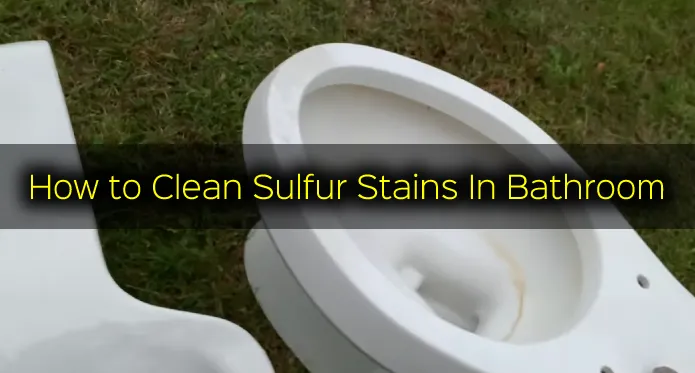Last Updated on March 4, 2023
People are often mystified and frustrated when they discover a stubborn yellow-brown discoloration in their bathrooms. Not only is it an eyesore, but it can also cause bad odors and unsightly deposits in your bathroom.
To tackle this problem quickly, an old household remedy can help: white vinegar. Simply apply the liquid to affected surfaces and let it do its magic for several minutes before using a brush or non-abrasive scrubber to complete the cleanup.
Even though we try, those uninvited yellow spots sometimes can still stubbornly remain. Don’t despair if yellow spots appear.
There are also several ways to make them vanish. One of the best is using a commercial cleaner. If that’s not available, rubbing alcohol or an all-natural borax and lemon juice concoction will do wonders.
Let’s dive in to explore these methods and see what effects sulfur stains can cause if we do not take the proper precautions.
How to Clean Sulfur Stains In Bathrooms Effectively: DIY Steps
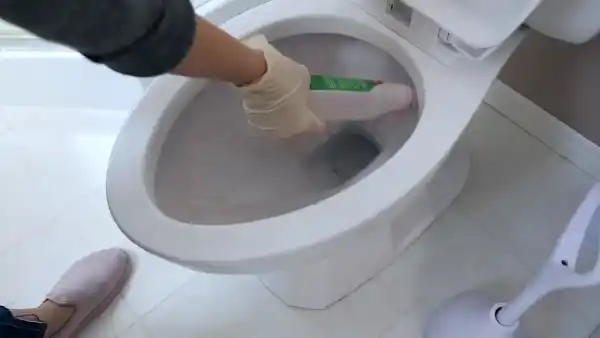
White vinegar is a cost-effective way to clean sulfur stains. Vinegar is a mild acid that works to break down sulfur deposits without damaging the surfaces of your bathroom.
Here are some simple steps to follow when cleaning sulfur spots with white vinegar:
Step 1: Remove Loose Debris From the Surface
Before beginning the cleaning process, it’s essential to remove any debris from the surface of the affected area. This could include dust, dirt, and other particles that could get trapped in the cleaning solution and make it more difficult to achieve a thorough clean.
Use a vacuum or broom to carefully sweep away any debris from the surface before moving on to Step 2.

Step 2: Put the Vinegar On
Once you’ve removed all of the loose particles, it’s time to apply white vinegar directly onto the affected areas. Use a spray bottle or pouring jug to evenly distribute the vinegar across all areas where there are visible signs of sulfur staining.
Be sure to cover every inch of the exposed surface with an even layer of vinegar, as this will help ensure maximum effectiveness when scrubbing later on.
Step 3: Let the Mixture Sit and Scrub the Area
After applying an even layer of white vinegar across all affected surfaces, let it sit for 10-15 minutes, then scrub gently with a soft cloth or sponge. The acidity in vinegar helps break down built-up sulfur deposits on tile grout, porcelain fixtures, and other hard surfaces without damaging them further.
Letting the mixture sit and then gently scrubbing will help lift stubborn stains and give your bathroom surfaces a sparkling finish.
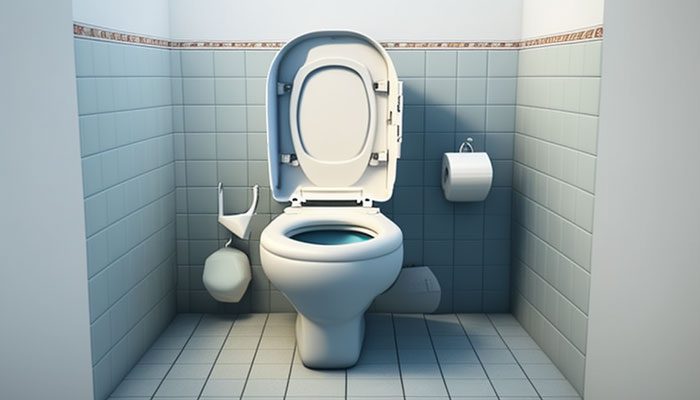
Step 4: Rinse the Surface With Warm Water
After you have scrubbed all of the dirt and grime off of your bathroom surfaces with white vinegar, it is essential to rinse off any remaining residue with warm water. This will give you the best results. Fill up a basin or bucket with warm water and use a cloth or rag to wipe away any excess residue left behind by the cleaning process.
Being careful not to leave any standing water behind afterward as this could lead to further staining over time if left untreated.
Additional Treatments For Stubborn Sulfur Stains
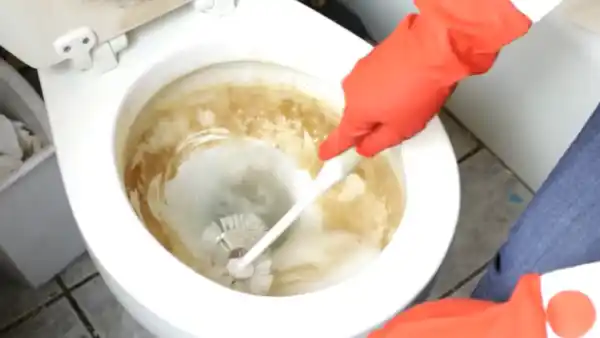
When regular household cleaners fail to remove ugly stains, don’t despair. There are other options available that can restore your surfaces without harsh chemicals or aggressive scrubbing.
Following are a few additional treatments you can try:
Use Commercial Cleaner
Using commercial cleaners can be an effective way to remove sulfur stains from the bathroom. Before applying the cleaner, it is important to test a small area of the stain first to make sure it doesn’t cause any issues like discoloration or damage.
Aside from that, use a scrub brush or rag to scrub away any loose debris on the surface of the stain before cleaning to ensure that all dirt is removed.
Once you are sure the area is free of people or animals, mix the cleaner with the correct amount of water (or other liquids) according to the package instructions. Apply it directly to the stain. Let it sit for approximately 10 minutes before rinsing it off with warm water.
Rubbing Alcohol Treatment
Another effective method for removing sulfur stains from bathrooms is using a mixture of rubbing alcohol and warm water. Begin by mixing equal parts of each and pour it onto the affected area.
Make sure not to wipe off the mixture too quickly, as this could spread out residue causing more discoloration. Let the rubbing alcohol solution sit for 10-15 minutes before scrubbing. This will break down the stains and lift them away without damaging any surrounding tiles or grout lines.
After letting it sit, rinse off with warm water until all traces of solution are gone and dry with a towel or cloth afterward.
Borax With Lemon Juice
To remove sulfur from hard water stains around your bathroom surfaces without causing any damage or discoloration, mix the borax powder with lemon juice to create a thick paste. Rub the cleaning paste over the affected area.
You should never mix the borax powder with other cleaning products. If you do, it could release harmful fumes into your home. Instead, just use borax powder on its own when combined with lemon juice for best results against stubborn sulfur stains.
Once you have removed all the rust stains with this mixture, rinse the area completely with water until there is no borax left. Then dry it like normal.
What Causes Sulfur Deposits In Bathrooms?
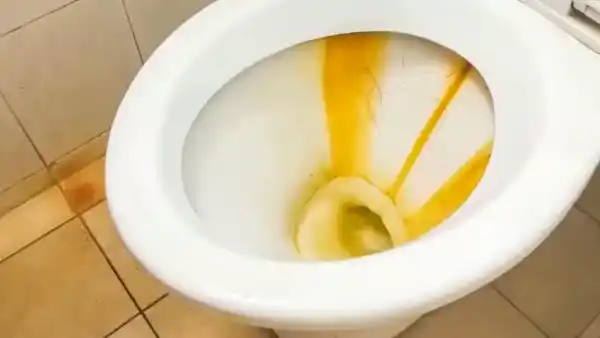
The presence of sulfur deposits in the bathroom is one of the most common plumbing problems. Although it’s not always dangerous, it can be a nuisance to deal with, and it’s essential to know where it comes from.
Here are some places where sulfur deposits can occur:
1. Water Supply
Sulfur deposits are often caused by sulfur dioxide, hydrogen sulfide, hard water, or iron sulfide in the water supply system. While there may be no odor from these compounds, they can cause yellowish-brown discoloration on bathroom fixtures and other surfaces.
2. Household Cleaning Products
Some cleaning products contain sulfur compounds that can contribute to forming sulfur deposits in the bathroom. Take extra precautions when handling these products near a sink and toilet bowl to prevent them from getting into the water supply system.
3. Water Heater and Hot Water Pipes
Over time, hot water pipes and heaters can cause a lot of sulfur to build up. This happens because the hot temperatures inside them make the pipes corrode. When this happens, it causes more hydrogen sulfide gas to be released into the air. This can make surfaces near the plumbing fixtures turn orange stains.
4. Caulk & Grout
In some cases, the caulk & grout used around bathtubs, showers, and sinks can contain sulfur compounds and other metallic particles. These particles may be released over time due to wear or chemical reactions with other materials in the bathroom environment.
5. Natural Occurrences
Natural occurrences such as volcanoes or decaying plant material can also release small amounts of sulfur compounds into the atmosphere. This may eventually settle on surfaces inside your bathroom over time, creating a yellow-brown discoloration known as “bronzing.”
The Consequences of Not Cleaning Sulfur Stains From Bathroom

Neglecting to clean sulfur stains from the bathroom can have more disastrous results than you might expect. Among the most common problems are the following:
Unattractive, Dingy Appearance
Sulfur stains can cause bathrooms to take on an unpleasant, dingy appearance that is difficult to remove without professional help. Not only will the bathroom look unkempt and unsightly, but the discoloration can make the entire room appear darker and smaller than it actually is.
Also, if left untreated for long periods of time, sulfur rust stains will become more difficult to remove. Making it even more unattractive and challenging to restore its original look.
Damage to Fixtures and Surrounding Surfaces
Unchecked sulfur stains can wreak havoc on bathroom fixtures such as sinks and tubs. The corrosive nature of these rust stains can cause discoloration, pitting, and corrosion of the fixtures’ surfaces which can be costly to repair or replace.
Aside from that, sulfur stains can damage surrounding surfaces like tiles, grout, countertops, and walls. Which may require a significant amount of effort to bring back their original condition.
Unpleasant Odors & Smells
One of the most persistent issues with sulfur stains in bathrooms is their lingering bad smells after cleaning them up. Not only do these smells make people in the house uncomfortable, but they also attract bugs and other pests. These pests spread the smell around the house, making the problem worse.

Potential Health Risks Associated
Besides being a nuisance aesthetically speaking, unchecked sulfur stains in bathrooms pose potential health risks for those living in them as well. Whenever sulfur is exposed to water or air moisture, it produces sulfide gas, which, over time, can result in respiratory problems.
It is not recommended to touch these products with your skin because it might cause irritation or an allergic reaction. Some people are more sensitive than others to the substances in these products.
Does Hydrogen Peroxide Get Rid Of the Sulfur Smell?
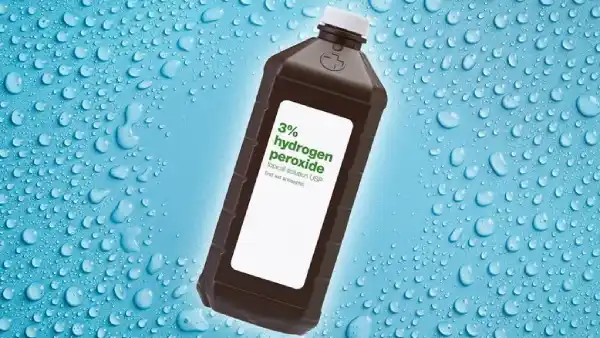
Hydrogen peroxide is a natural powerhouse. This potent oxidizing agent can break down the molecules producing sulfuric odors, eradicating bacteria and iron from your air in one fell swoop.
So when other methods of odor removal seem to fail, hydrogen peroxide stands at the ready for an effective solution that will leave you with fresh-smelling air.
It works by breaking down these molecules into smaller particles that are unable to produce any odor. Additionally, hydrogen peroxide is gentle enough not to damage surfaces or fabrics and can be safely used without any harsh chemicals or fumes.
Goodbye Stinky Sulfur Stain: Freshen Your Bathroom Now
Nobody likes a smelly bathroom, but sulfur deposits can make it even worse. Taking proactive steps to avoid these stains is the best way to keep your home fresh and clean. If you sense something isn’t quite right in there, don’t wait for an issue that may be difficult or costly to fix later on.
With the above guidelines on how to clean sulfur stains in the bathroom, you’ll be able to keep the problem under control. Whether you use a commercial cleaner or make your own solution, you can keep your bathroom looking great.

